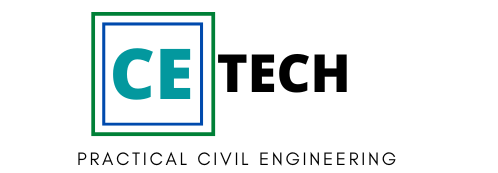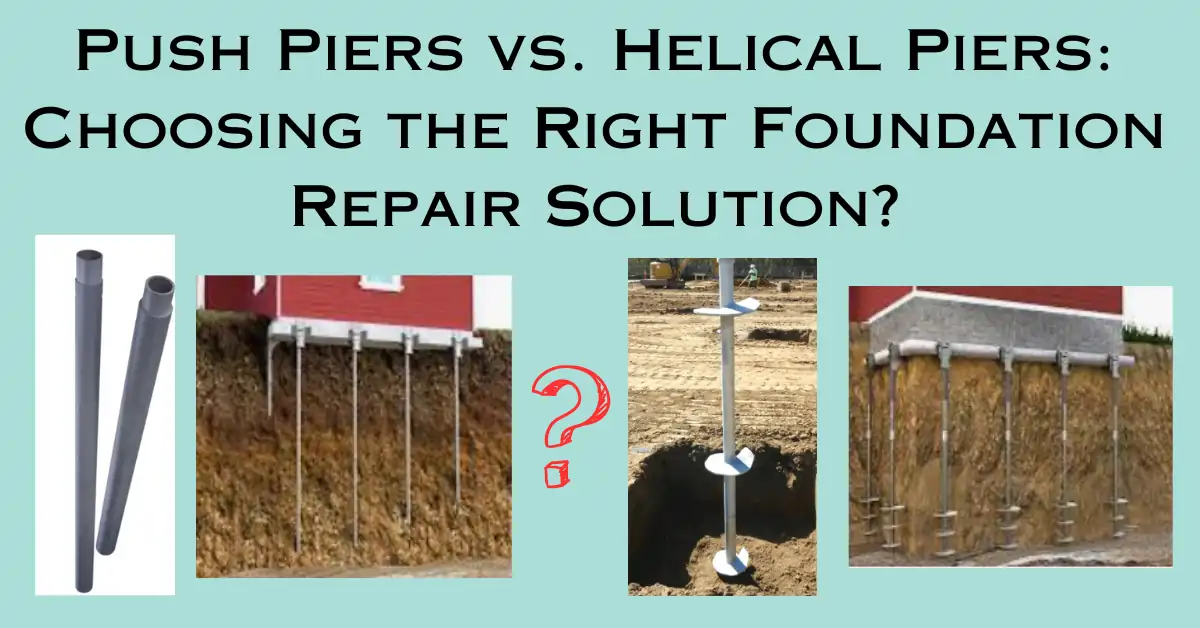A strong and stable foundation is essential for the longevity of any structure. Over time, however, various factors such as soil conditions, moisture changes, and structural loads can lead to foundation settlement and compromise the integrity of a building. In such cases, foundation repair becomes crucial, and two common methods that often come into play are push piers and helical piers. The following discussions are aimed at giving insight into the differences between these two foundation repair solutions, helping you make an informed decision about which one suits your needs.
Push Piers: A Closer Look
Push piers, also known as resistance piers, are steel tubes that are driven into the ground until they reach stable soil or bedrock. The typical length of the tubes is 36 inches. They are connected with slipfit connections and therefore basically compression piers. Side load retrofit brackets are employed to transfer the loads through the push piers to the firm soil stratum.
This technique transfers the weight of the structure from unstable soil to a more solid foundation. Therefore the piers require a firm soil stratum or rock for developing the end bearing resistance.

Here’s a closer look at the characteristics of push piers:
Installation Process: Push piers are installed by hydraulically driving them into the ground. The driving force relies on the reaction due to the weight of the structure for installation and is driven until it reaches a load-bearing stratum. Hence, the driving force magnitude depends on how heavy the structure is. The bracket is installed before the driving of the push piers is started to develop the reaction force that drives them into the soil.
Suitable Soil Conditions: Push piers are ideal for structures built on relatively stable soil or when the load-bearing stratum is within a reasonable depth. They work well in areas with varied soil conditions. According to Foundation support works, a main manufacturer, typically, standard penetration test (ASTM D1586) blow counts, N-values, of 35-40 blows per foot (bpf) for clay and 30-35 bpf for sand are required to provide end-bearing resistance for push piers.
Load-Bearing Capacity: Push piers are driven into the soil to a target ultimate force that indicates a competent soil layer. So the geotechnical properties of the soil are verified under loading since the process is load tested. Push piers can handle significant loads and are commonly used for larger and heavier structures like commercial buildings and multi-story homes.
Settlement Correction: These piers are effective at correcting foundation settlement issues caused by soil compaction, moisture changes, and poor soil quality.
Limited Disruption: Push pier installation requires minimal excavation, causing less disruption to the surrounding landscape.

Cost: Simple slip-fit connections result in less expense for long shafts
Helical Piers: An In-Depth Understanding
Helical piers, also referred to as screw piles or helical anchors, consist of steel shafts with helical plates attached. These plates allow the piers to be screwed into the ground, providing support and stability. Helical piers do not depend on the weight of the structure for driving. Hence, the bracket is normally installed after the piers are driven. The bearing resistance mainly is achieved by the helices or blades of the piers.

Here are the key features of helical piers:
Installation Process: Helical piers are screwed into the ground using hydraulic machinery, and they don’t rely on the structure’s weight for installation. The driving is executed by application of torque using handheld equipment or machines such as excavators, and other machines. The helical plates enable them to anchor securely into the soil. The installations can be done in all weather conditions.
Suitable Soil Conditions: Helical piers are versatile and can be used in a variety of soil conditions, including areas with unstable soil or where the load-bearing stratum is at a considerable depth. Foundation Support Inc. recommends For helical piers, N-values of at least 15 bpf for clay and 10 bpf for sand are required to provide the end-bearing resistance. Helical piers are a good option since they are more adaptable to different soil profiles. By adjusting the depth and blade area, the helical piers can be adapted for different soil types and depths. These piers can successfully increase load-bearing capability over a wider range of soil conditions by configuring lead sections and extensions.
Load-Bearing Capacity: Helical piers can handle significant heavy loads when the soil type is satisfactory. However, they are not preferable for some very weak or loose soil. Helical piers are good at counteracting uplifting forces. Helical piles are adaptable to varying soil conditions since the sections and blades can be configured to a number of variations in length and number and area of blades or helices.
Settlement Correction: Helical piers are effective at stabilizing and lifting foundations that have experienced settlement due to factors like expansive soils or inadequate soil compaction.
Quick installation and suitable for limited access: The installation can be performed using a variety of equipment hand tools, mini excavators, and skid steers.
Minimal Disturbance: Helical pier installation requires relatively small excavation and causes minimal disruption to the surrounding area. Their installation is free of spoils and is effective in avoiding contamination of the soil.
Choosing the Right Solution
Deciding between push piers and helical piers depends on several factors:
Soil Conditions: If your property has varying soil conditions with weak or loose soil types or the load-bearing stratum is deep, helical piers might be more appropriate. For relatively stable soil, push piers could be sufficient. Push piers require more stable soil because the load-carrying capacity depends only on end-bearing resistance.
Structure Size: For larger structures, push piers might be the better choice due to their higher load-bearing capacity. Helical piers are well-suited for smaller to medium-sized structures since the use of a push pier may not mobilize enough reaction force for driving.
Budget and Timeline: The cost and timeline of installation could influence your decision. While both solutions are efficient, the specifics might vary based on your location and project requirements. For example, push piers have thinner sections and simpler connections that may result in lesser cost. However, for deep foundations helical piers may be cost effective.
Weather conditions: While helical piers can be installed under all weather conditions, push piers can not be installed in extreme weather situations with heavy rain, snow, or sub-zero temperatures.
Foundation Issues: The underlying cause of your foundation issues, whether it’s soil problem, failure of foundation, or other factors, could also guide your choice between the two solutions.
Both push piers and helical piers are reliable foundation repair solutions that can effectively address a range of structural issues. Your choice should be based on a careful evaluation of factors such as soil conditions, structure size, and budget. Consulting with a professional foundation repair contractor is crucial to determine the most suitable solution for your specific needs. By making an informed decision, you can ensure the long-term stability and durability of your valuable property.

